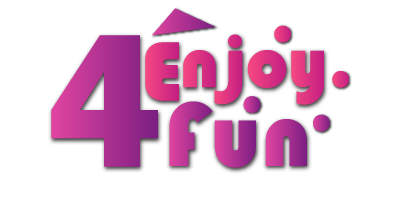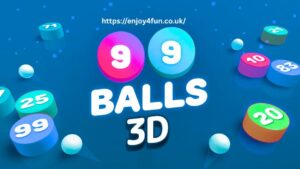In the ever-evolving world of artificial intelligence and interactive media, Blob Opera stands out as one of the most delightful, imaginative, and surprisingly educational tools released in recent years. Developed by Google Arts & Culture in collaboration with artist David Li, Blob Opera allows users of all ages and backgrounds to create rich, operatic musical performances by simply dragging blobs up, down, forward, or backward.
What makes this project unique isn’t just the playful interface—it’s the AI technology behind it. Let’s explore how Blob Opera works, why it’s so popular, and how it’s revolutionizing the relationship between music and machine learning.
What Is Blob Opera?
Blob Opera is an interactive music experiment powered by AI and machine learning, developed by Google Arts & Culture. It features four colorful, gelatinous characters—bass, tenor, mezzo-soprano, and soprano—who perform opera together in real time. You control the pitch and vowel sound of each blob with your mouse (or finger on mobile), and the AI takes care of harmonizing and operatic expression.
There’s no need for any musical background or vocal skill. With a few drags and clicks, you’re conducting your own unique opera performance. This makes Google Blob Opera an amazing tool not just for entertainment, but also for learning and creativity.
How Blob Opera Works: The AI Magic Behind the Scenes
One of the most fascinating parts of Blob Opera is the machine learning model it uses to simulate operatic voices. But contrary to popular belief, the blobs are not just mimicking human singers through playback. Here’s how it works:
- Training Data: The AI was trained on recordings of real opera singers representing different vocal ranges. This included bass, tenor, mezzo-soprano, and soprano voices.
- No Pre-recorded Audio: What you hear during a performance is not a pre-recorded sample. The blobs generate real-time audio based on the AI’s understanding of operatic singing, shaped by your input.
- Machine Learning in Action: By learning from the vocal nuances of real singers, the AI creates its own version of how those voices would behave if singing specific notes and vowels together.
This innovative approach is a perfect example of machine learning in music—where AI is not just following instructions, but co-creating art with the user.
Features That Make Blob Opera Unique
Here are some of the standout features of Google’s Blob Opera tool that have contributed to its viral popularity:
Real-Time Harmony Generation
The blobs harmonize with each other in real-time based on your direction. Drag one blob up or down to change pitch; move them forward or backward to modify vowel sounds. The rest will adjust automatically to create a beautiful chord.
Four Vocal Types
The blobs cover the entire vocal range typically found in a classical opera quartet:
- Bass (deep and rich)
- Tenor (bright and expressive)
- Mezzo-soprano (warm and lyrical)
- Soprano (light and high-pitched)
Holiday Mode
A fun seasonal feature allows you to switch to “Holiday Mode,” where the blobs perform classic Christmas carols like Jingle Bells or Silent Night. You simply sit back and enjoy the show.
Record and Share
Once you’ve crafted your opera masterpiece, you can record your performance and share it via a unique URL. This makes it a fun activity to send to friends or post on social media.
AI Meets Art
Blob Opera is part of Google Arts & Culture’s mission to make art, music, and history more accessible through technology. It’s a creative fusion of art, AI, and education.
Blob Opera for Education and Learning
Although Blob Opera looks like a playful experiment, it’s also a powerful educational tool in disguise:
- For Music Students: It teaches harmony, pitch variation, and how different vocal ranges interact.
- For Kids: It’s an engaging way to introduce children to classical music without feeling formal or overwhelming.
- For AI Enthusiasts: It provides a brilliant example of how machine learning can replicate complex human expressions like singing.
Teachers and educators have started using Blob Opera in classrooms to make lessons about sound waves, music theory, and AI applications more engaging and hands-on.
Why Blob Opera Went Viral
The success of Blob Opera lies in its simplicity, accessibility, and shareability. It requires no sign-up, no musical talent, and no special software—just a browser and a curious mind. Here’s why millions have fallen in love with it:
- Instant Gratification: No learning curve. You start creating operatic music within seconds.
- Entertainment for All Ages: Whether you’re a toddler or a retiree, it’s fun for everyone.
- Social Sharing: The record-and-share option turned it into a social media sensation, especially during the holidays.
Plus, the charming animations and expressions of the blobs create an emotional connection—something that few tech demos manage to achieve.
Where to Try Blob Opera
It works on desktops, tablets, and most mobile devices. For the best experience, use a device with sound output and a bigger screen to enjoy the visuals.
Blob Opera and the Future of AI in Music
Blob Opera is just one example of how AI and machine learning are transforming music creation. From composing symphonies to beat-making, AI tools are enabling musicians and hobbyists to experiment like never before.
Here’s what Blob Opera hints about the future:
- Democratization of Music Creation: You don’t need to be a trained singer to compose opera anymore.
- AI as a Creative Collaborator: Rather than replacing artists, AI like Blob Opera augments human creativity.
- Playful Learning Tools: EdTech and creative AI tools are merging to make learning more fun and accessible.
Google’s Blob Opera may be lighthearted on the surface, but underneath it’s a serious demonstration of how far interactive AI music tools have come.
Conclusion A Joyful Blend of Technology and Art
Whether you’re a music lover, an AI enthusiast, or just someone looking for a five-minute creative escape, Blob Opera offers a uniquely joyful experience. It combines technology, creativity, and a dash of humor to show how machine learning can be a medium for art and expression.
With no ads, no fees, and no barriers to entry, it’s a perfect example of AI being used for public good—sparking joy, curiosity, and learning for all.






